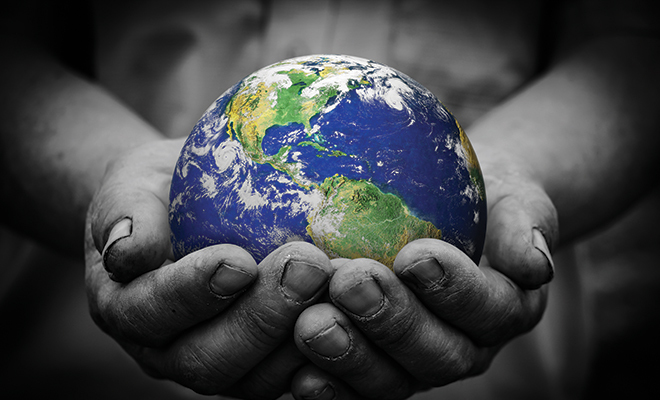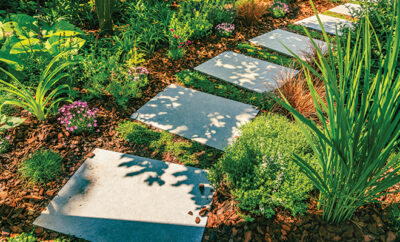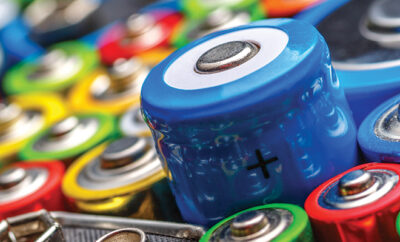
Revisiting Earth Day
As you flipped the calendar to April 2017, you may have noticed the Earth Day notation on April 22. At that moment, you might have also found yourself wondering what the event is about and how your family could get involved.
Earth Day came to fruition after six long years of effort. In the 1960s, Wisconsin Senator Gaylord Nelson had the foresight to look at the long-term impact of pollution on the environment and he made it a personal mission to spread the word and raise awareness. He was instrumental in getting his message out to college students, who took this issue on with concern and enthusiasm. Earth Day became a National Awareness day on January 20, 1970, with the date set for celebration as April 22 of every year; it is currently celebrated in approximately 193 countries.
The 47th anniversary of Earth Day will take place on April 22, 2017. Through the combined efforts of government, grassroots organizations and environmentally minded companies, Earth Day has evolved into a worldwide campaign to protect the global environment. In a nutshell, it’s a time when individuals, families and communities share a like-minded cause of doing whatever they can to protect the earth’s precious resources.
But acknowledging Earth Day is one thing; helping our kids take action to bring the lessons of conservancy and honoring the Earth is another. The best way to feel connected to this planet is to experience it. We’ve found some educational and entertaining ways to help the world’s children hug the Earth.
Learn more through the pages of a book.
Libraries and book stores are bursting with earth-minded books just for young readers. Through books such as One Plastic Bag: Isatou Ceesay and the Recycling Women of the Gambia by Miranda Paul, What Does it Mean to Be Green by Rana DiOrio, Olivia’s Birds: Saving the Gulf, written in 2011 by 11-year-old Olivia Bouler, Care for Our World by Karen S. Robbins, 10 Things I Can Do to Help My World by Melanie Walsh and Common Ground: The Water, Earth, and Air We Share by Molly Bang, kids will discover amazing facts and activities that will assist them in realizing how much they can do to save our world.
Get schools involved.
Classrooms are a great way to rally and educate our youth on the importance of Earth Day. Crayola® created a used marker recycling program called ColorCycle that encourages classrooms to collect and send in their used markers. Beverage giant PepsiCo works tirelessly to help schools put internal recycling programs in place and the Green Education Foundation offers online classes for K-12 schools that teach sustainability concepts. Non-profit humanitarian initiatives such as H2O for Life also have special programs and components in place to get schools involved in spreading the water conservation message.
Get outside and explore.
In a world of binge-watching TV shows and endless computer games, today’s youth is losing sight of one of life’s most critical childhood delights, that of getting outside in nature and exploring. Richard Louv, author of Last Child in the Woods, notes, “Passion is lifted from the earth itself by the muddy hands of the young; it travels along grass-stained sleeves to the heart.”
No one can argue the fact that there are huge health benefits to experiencing fresh air and sunshine, but our kids need to be able to know nature and its beauty in order to be passionate about protecting it. Organizations such as GoExploreNature.com, Kids for Saving Earth, Nat Geo Kids, The Nature Conservancy and DiscoverTheForest.org are brimming with awe-inspiring ways to immerse today’s kids in nature.
Wherever you are on this beautiful planet, it’s time to share the gift of mindful and environmental living with our future generations. To learn about other ways to get involved in celebrating Earth Day in your home or community, visit earthday.org. ■
Sources: crayola.com, discovertheforest.org, goexplorenature.com, h20forlife.org, kids.nationalgeographic.com, pepsicorecycling.com and wikipedia.org.
Make Earth-Friendly Changes at Home
The best learning often starts at home. Here are five ways families can make little changes in their lives that make a big difference in reducing waste and energy.
• Brainstorm ways to reduce household waste. This could include using cloth shopping bags, cutting back on buying prepackaged foods and using reusable containers instead of plastic bags for lunches.
• Don’t feed the energy pig! Work as a family to reduce energy and water waste. Turn off lights, power off electronics when not in use and take shorter showers.
• Recycle! Encourage kids to recycle paper products, plastic and glass. Bring these lessons to life by visiting a local dump and a recycling center.
• Go with leg power! Biking or walking to nearby places is not only great exercise, but it helps to reduce the harmful emissions that vehicles put into our environment.
• Give back to the Earth. Acts of kindness for Mother Earth can include picking up litter, composting kitchen scraps to make rich soil and planting a tree or garden.







